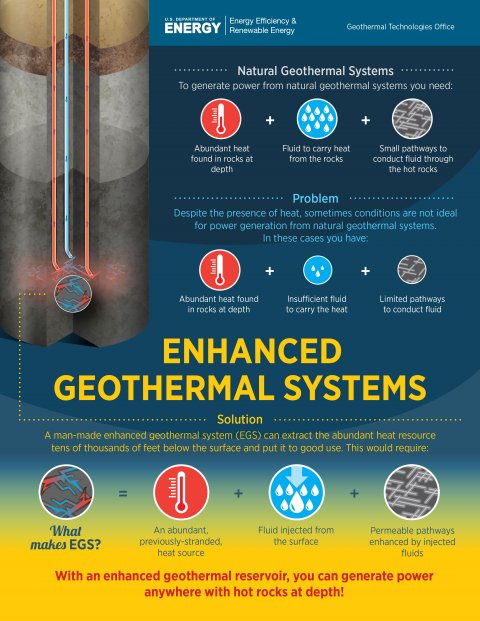Steps to Develop Power Production at an EGS Site
Step 1: Identify/Characterize a Site
- Develop a geologic model of a potential site via surface, geologic, geophysical, and remote sensing exploration.
- Assess the temperature gradient, permeability, in-situ stress directions of the resource, rock mechanical properties, and whether fluid is present.
- Determine if the necessary characteristics to create an EGS reservoir are present.
Step 2: Create a Reservoir
- Drill an injection well into hot rock with limited fluid content and/or permeability.
- Inject water at sufficient pressure (or temperature differential) to create a fracture network.
- Continue operation until there is enough fractured volume to create a reservoir (flow rate, temperature, and volume).
- Drill a production well into the fracture network, intersecting the created flow paths.
- The resulting circulation loop allows water to flow through the enhanced reservoir, picking up in situ heat. The hot water is then pumped to the surface through the production well (see diagram below).
Step 3: Operate the Power Plant and Maintain the Reservoir
- At the surface, the water flashes to steam, or it heats a working fluid that produces vapor.
- The steam/vapor turns a turbine to create electricity.
- The original geothermal water is recycled into the reservoir
Want to learn more about how an EGS System works?
Enhanced Geothermal System animation*
Enhanced Geothermal Systems Infographic
*This EGS animation is a Calpine Corporation and Lawrence Berkeley National Laboratory collaborative project co-funded by the U.S. Department of Energy. It was produced by Baker Hughes in 2012.


